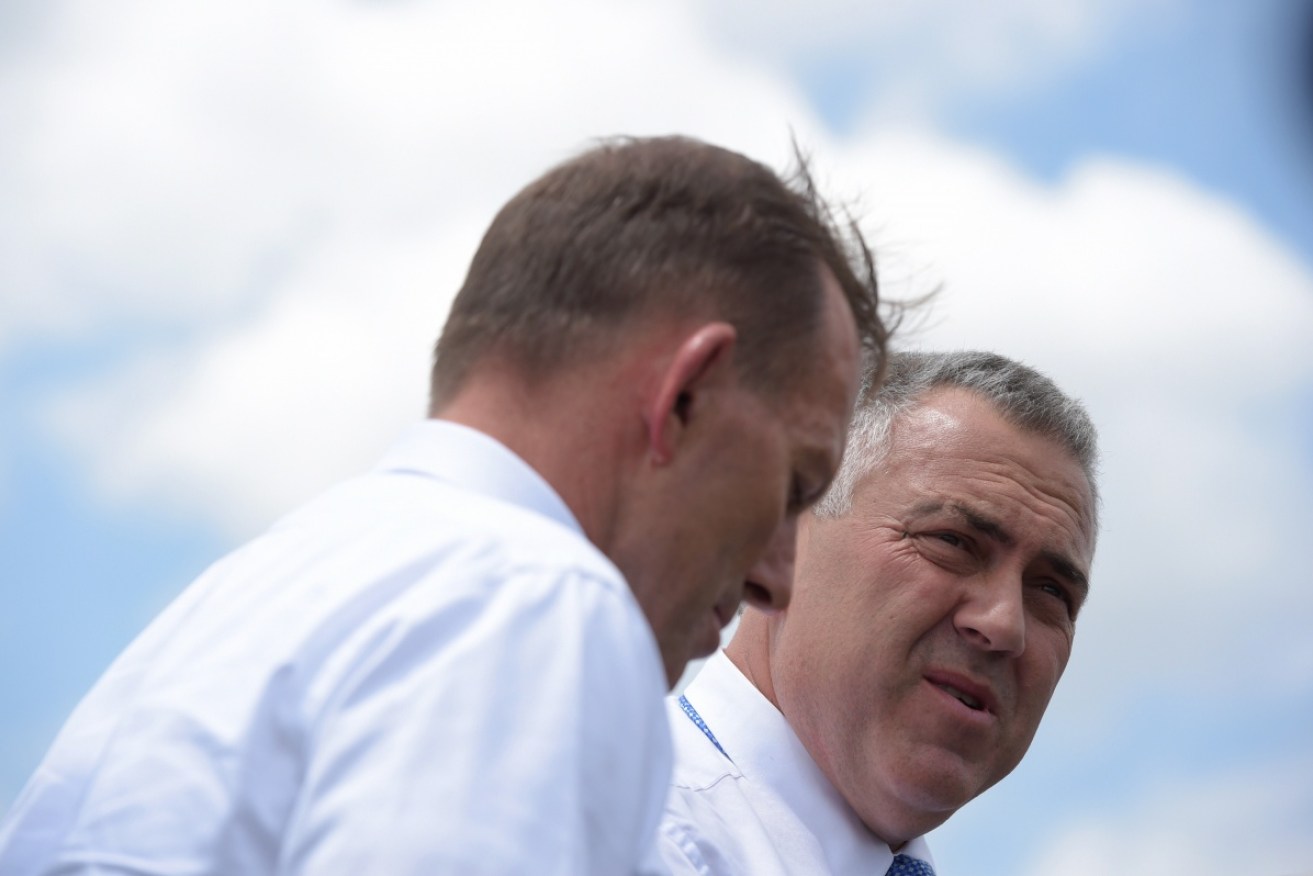Labor’s negative gearing aims echo Coalition housing changes


Abbott and Hockey restricted foreign investment. Photo:AAP
Prime Minister Malcolm Turnbull has been vocal in decrying the Labor Opposition’s plans to restrict negative gearing to investors buying new properties, claiming it will lead to a crash in the price of existing housing.
But the evidence is against this hypothesis. Over the last five years, every state and territory government across Australia (mostly Coalition governments) has abolished the grants formerly made to first-time buyers of established dwellings, and increased (in most cases doubled) the grants for first-time buyers of new dwellings without noticeable damage to the market.
• Saul Eslake: Negative gearing proponents’ claims don’t stack up
• Interest rates are on the move – you just can’t see it yet
• Home brand snobbery is costing you money
• All signs points to a post-election ‘borrowing boom’
Two other important policy changes implemented in the past two years by the Abbott and Turnbull governments have, taken together, had the objective of dampening investor demand for established housing and deflecting buyers towards new housing.
The first of these is the tightening of Foreign Investment Review Board (FIRB) regulation of foreign investment in housing.

Abbott and Hockey restricted foreign investment. Photo: AAP
It was initiated by former Treasurer Joe Hockey after recommendations from a Parliamentary committee chaired by now Assistant Treasurer, Kelly O’Dwyer.
These changes significantly increased the penalties for foreigners acquiring established properties without FIRB approval.
Crackdown on foreign housing investment
They also imposed greater reporting requirements on real estate agents selling properties to foreign investors and boosted the resources available to FIRB to monitor compliance.
Foreigners actually account for a very small proportion of the demand for established dwellings. In 2013-14, the latest year for which figures are available, FIRB-approved foreign purchases of established dwellings totalled $7.2 billion.
Even if, for the sake of the argument, one assumes that foreigners actually acquired twice this amount, or $14.4 billion, of established property in 2013-14, the figure pales into insignificance against the $116 billion lent to Australian investors for the purchase of established properties in 2013-14 and the $108 billion lent to Australian owner-occupiers for the same purpose.
By contrast, FIRB approved $27.6 billion in foreign purchases of new residential properties in 2013-14. That’s almost four times the amount lent to Australian investors in new residential property in the same year and close to the $32 billion lent to Australian owner-occupiers for the purchase or construction of new homes.
In other words, making an educated guess about the amount of equity provided by Australian investors in new housing, foreign investors are doing around three times as much as Australian investors to add to the supply of housing.
Encouraging new housing investors
Rightly, the Abbott and Turnbull governments have sought to dampen foreign demand for existing housing – even at the risk of reducing the price that Australian sellers of existing housing might receive for their properties – whilst encouraging foreigners to buy new housing.
Similarly, last year the Australian Prudential Regulatory Authority (APRA), with at least the tacit approval of both the Abbott and Turnbull governments, directed the banks to tighten lending criteria for property investors. Once again, the effect of these changes has been to dampen the demand for housing from investors (93 per cent of whom purchase established housing).

Foreign money is building new Aussie homes. Photo: AAP
Since the end of last year, lending to property investors has fallen by 15 per cent – while lending to owner-occupiers has risen by eight per cent.
Bob’s your uncle
Have all these changes ‘smashed’ the housing market? No, they haven’t. To be sure, the rate of escalation of existing property prices has slowed – but that’s a good thing!
As a result, would-be owner-occupiers have been more successful in buying homes. And there have been no across-the-board or sustained falls in property prices.
Labor’s negative gearing policy is designed to achieve exactly the same objectives as these Coalition-approved changes to regulations governing foreign purchases of established property and the lending practices of Australian banks.
Those changes have been good for the Australian property market, and especially for would-be homebuyers: and so would the changes to negative gearing proposed by Labor.
Saul Eslake is a leading Australian economist. He worked as the Chief Economist at the ANZ for 14 years and has worked at Bank of America-Merrill Lynch. Between 2009 and 2011, he was the Director of the Productivity Growth Program at the Grattan Institute. Visit his official website here.









